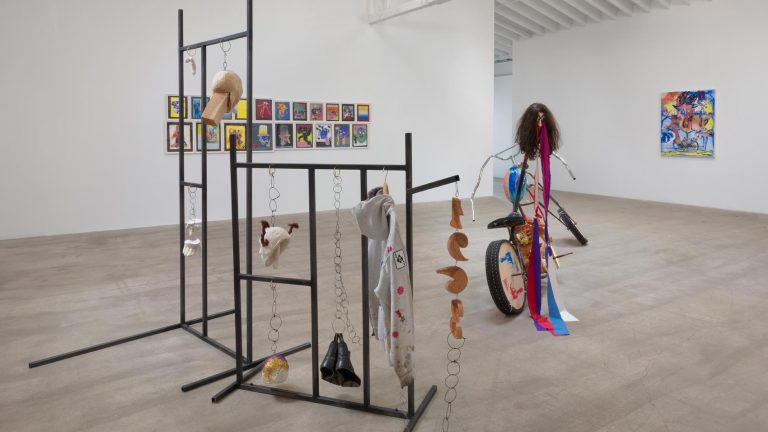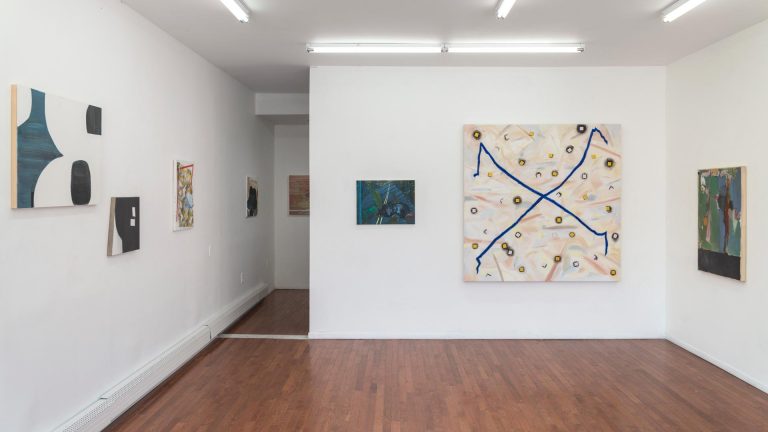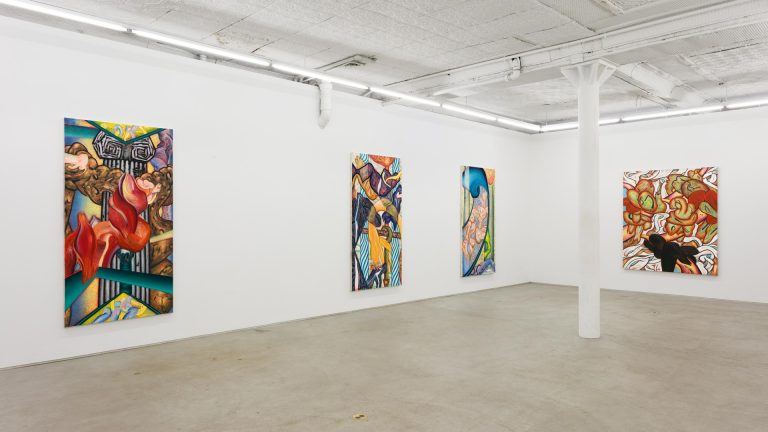
Artist: Anders Holen
Exhibition title: Aid For Impending Quagmire
Venue: helper, New York, US
Date: September 27 – October 26, 2014
Photography: Courtesy of Helper
helper is pleased to present an exhibition by Norwegian artist Anders Holen. Aid for Impending Quagmire is comprised of prefabricated elements, including aluminum sculptures, glass vitrines, and wallpaper, as well as plaster works produced by the artist in situ. The voidal spaces of flocked, vacuum-formed wall works hold amalgamated tool forms that function both as single sculptures in the exhibition and as excavation tools for the on-site production of Holen’s ongoing Statue of Regression series.
1. Despite the growing volume of academic ink spilled bringing objects into play as agents, the modern ego of man as primary agent has yet to be overcome. No matter how much supernatural agency objects may wield, they are still reduced to servants of human action, will, and choice. Nevertheless, any discourse concerned with the notion of primary agency in objects could easily be met by a noble, “say it is so.” Assessing one’s part as material in a symbiotic world could potentially acknowledge both the self and the it as participants, and furthermore render the possibility of a self in the it, or even an it in the self.
2. A “tool” could be a descriptor of a person and his/her lack of spine and mental capabilities. Stripped of these connotations and appointed alongside a certain collection of aids assigned for a certain impending quagmire, the role of a makeshift utensil is filled. As equally cherished instruments, man and object are set to produce entities that derive from, but do not imitate, recognizable subjects. Like a matryoshka doll, yet inconsiderate of scale and form, man and sculpture form the mold for sculpture.
3. A distinguishing characteristic between a backdrop and a marouflage is that in the latter the architectural elements of the given space are harmoniously incorporated into the picture. Within a specific situation, the characteristics of the marouflage may change and be subsequently conceived as a non-deceptive trompe l’oeil, where two-dimensional entities are relieved by three-dimensional entities, and historical aura established by referential bits and pieces.
4. Cecil B. DeMille explains in his autobiography that when shooting The Warrens of Virginia he wanted to sculpt the subjects properly, making shadows where shadows would appear in nature. When his business partner Samuel Goldwyn saw the film with its monotone, out-of-focus backdrops and scenes in which only half an actor’s face was illuminated, he feared the exhibitors would pay only half the price for the picture. Once reassured that the technique was called the Rembrandt-method, Goldwyn’s reply was jubilant with relief: “For the Rembrandt-method the exhibitors would pay double!”
Anders Holen (b.1986, Skien, Norway, lives and works in Oslo) graduated from the Oslo National Academy of Arts in 2010, and works in the field of sculpture and installation. Holen examines abstraction as a form of visual communication, and utilizes cast sculpture production as a means to explore the notion of the clone. By cloning the object, and implementing layers of abstraction in the process, Holen seeks to interpose the inherent information of the object, deprive it of it´s heteronomous state, and create situations with alternate sculptural and linguistic potential. His installations are developed from this sculptural framework, and are best rendered as environments domesticated in regard to the objects.
In addition to his practice Holen is one of the founding members of Tidens Krav, an artist-run gallery in downtown Oslo. Holen´s work was recently shown in exhibitions such as Paraphernalia at Telemark Kunstnersenter, Skien, Now, Usually I don´t do This, but uh… at Grunerløkka Kunsthall, Oslo, Monsalvat at Bureau, New York, and Betweenuscolada at Rake Gallery, Trondheim.



















